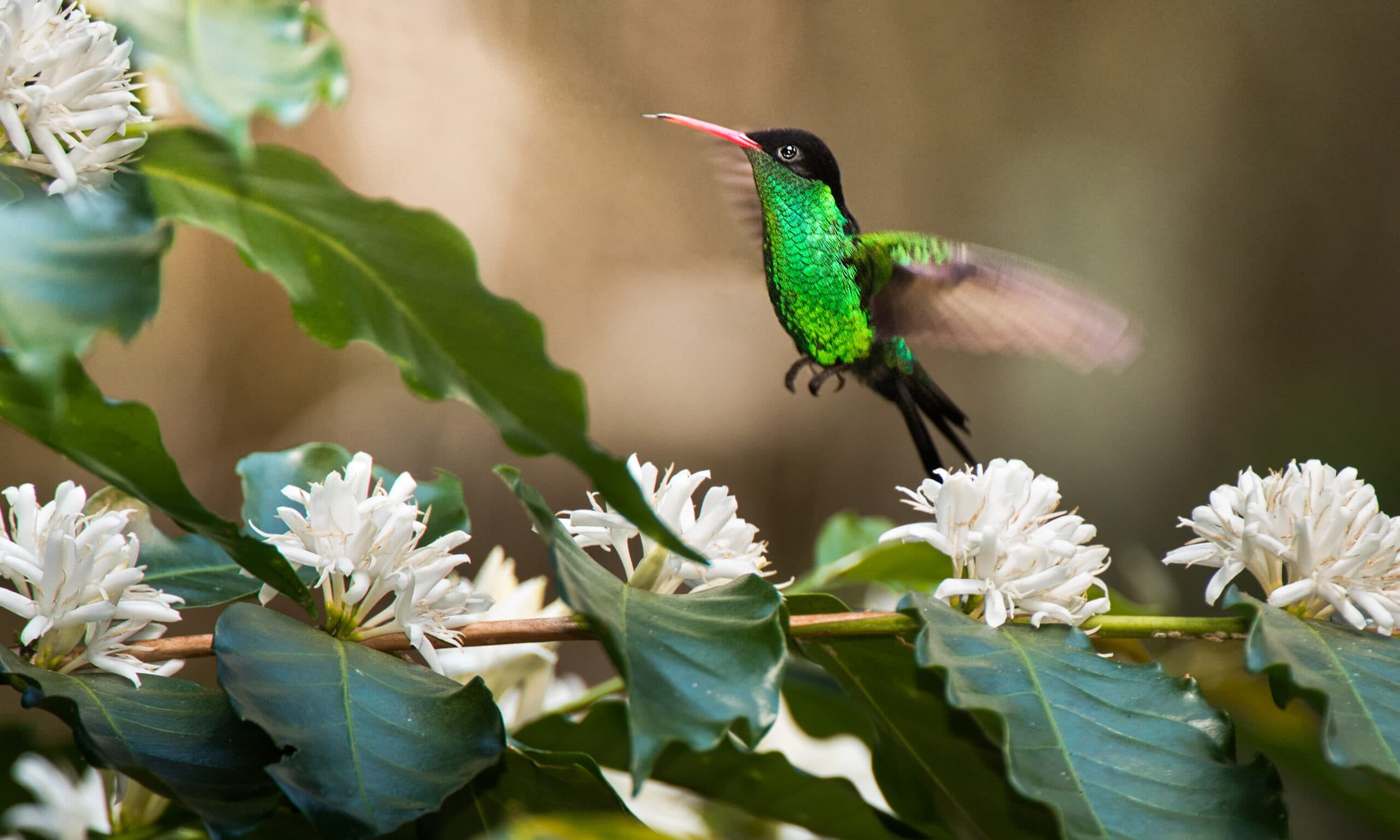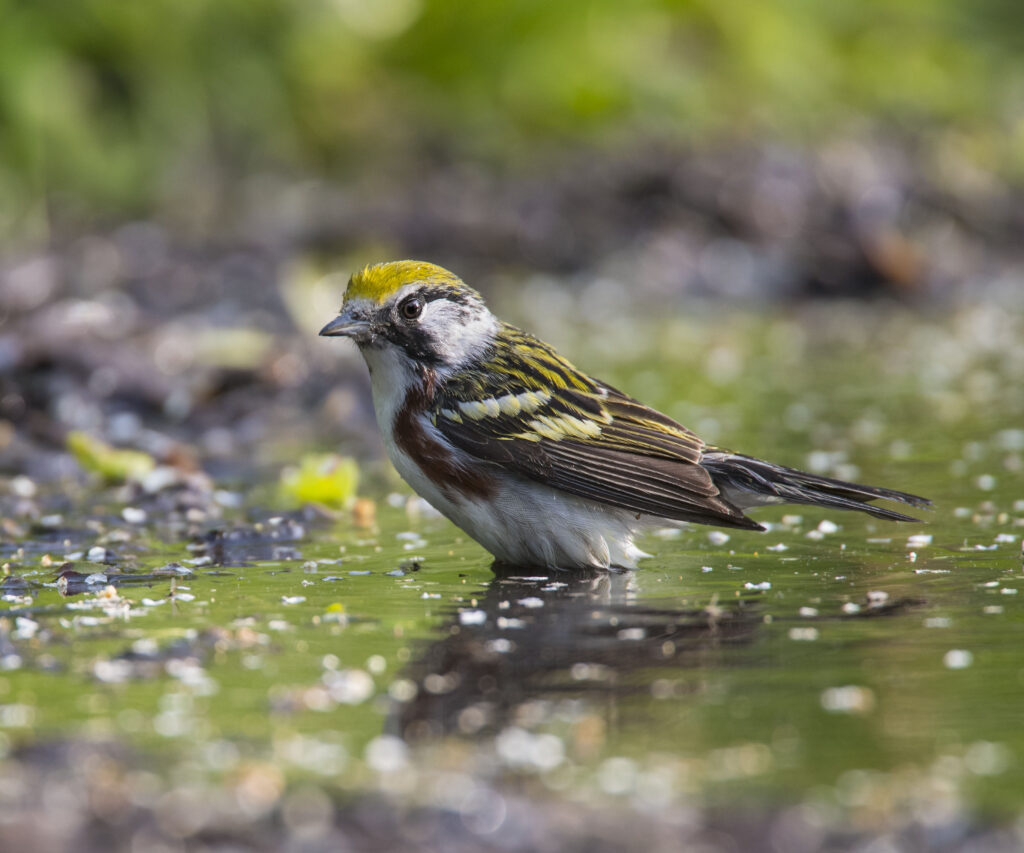
Many of us love the smell of fresh ground coffee brewing in the morning before we start our day. But not all coffees are created equal. Many people do not consider the types of coffee before they purchase, and how they affect the environment and its wildlife. As we recognize International Coffee Day on October 1st, it’s a great time to think about how your coffee choices could impact birds.
Coffee Made With Bird Conservation in Mind
Have you ever heard the term bird-friendly coffee? Perhaps you’ve heard of shade-grown coffee, but not all shade-grown coffee is bird-friendly coffee. The Smithsonian Migratory Bird Center (SMBC) created the Bird Friendly program in order to certify the highest quality coffee that helps to preserve bird habitat for migratory birds with very specific standards, and it creates an incentive for these small farms – a higher price point that benefits them financially. This program is also backed by American Bird Conservancy. According to the SMBC, Bird Friendly coffees come from farms that have a combination of good biodiversity, tree height and foliage coverage that all provide a high quality habitat for birds.
Shade-grown coffee helps endangered birds and bird migration
So what makes this coffee different from most of the coffees you can find at the store? Most of those cheaper coffees come from sun-tolerant farms. Sun-tolerant coffee farms are typically dry, devoid of varied vegetation, and have virtually no birds or other wildlife inhabiting it. Bird-friendly coffee farms are usually a blooming, vibrantly green tropical cloud forest. The requirements include forest shade cover, multi-layered canopy, and the presence of epiphytes, which are plants that harmlessly grow on other plants. These forests make for a great place for birds to live, particularly migratory birds. In fact, farms in Nicaragua that supply Birds and Beans brand coffee have shown more than 160 species of birds inhabiting them, including some threatened species. A tropical cloud forest is home to these birds, and most of these coffee farms are made up of this type of forest. It is home to many resident birds and birds that migrate from the United States, and they often spend 7 to 8 months in these tropical forests. The forests are extremely important for birds such as the Tennessee Warbler, Chestnut-sided Warbler, Black-throated Green Warbler, Wilson’s Warbler, Golden-winged Warbler, Red-breasted Grosbeak, Baltimore Oriole, American Redstart, Black-and-White Warbler, and Wood Thrush.
What Makes These Conservation Habitats Appealing to Birds
Each bird that makes use of these cloud forests for its dwelling place has very specific requirements for food and living. There is so much diversity and niches with various food sources to support many species of birds, Whereas sun-tolerant farms only have one type of habitat.
Commercial agriculture, especially sun-tolerant farming, contributes to the destruction of this tropical cloud forest. Sun-tolerant farms are the norm – less than 20% of coffee grown has any shade on it. The problem is that millions of acres of small shade coffee farms have been destroyed in favor of a more industrialized, money-making system of sun-tolerant coffee farms, which has destroyed important bird habitats. More than 40% of shade coffee farms in Latin America have been ruined and converted to sun coffee farms.
The Future is Bright for Bird-friendly Coffee and Bird Conservation
Bird-friendly farms are increasing. Nicaragua alone has over 400 farmers growing bird friendly coffee on 20,000 acres of bird-friendly land. There are now more than 100,000 acres of Bird-friendly coffee farms in Latin America. One of my favorite birding sites is actually Lime Tree Farm in Jamaica – a 10,000 acre Bird-friendly coffee farm famous for Blue Mountain Coffee. This coffee is also one of the most expensive in the world, but one of the finest. Its amazing biodiversity makes it a great home for birds – and at least 15 of Jamaica’s endemic birds have been seen here.
As of now, environmentally conscious consumers are turning towards buying this coffee more often. Birds and Beans, one of the largest distributors of Bird-friendly coffee, has experienced a 50% sales increase in each of the last five years, according to its owner Bill Wilson. Since one third of the world’s coffee supply is consumed by Americans, if their interest in this coffee increases, those farms can stay stable and continue to provide habitats for birds and further bird conservation. It will also allow the market to expand, which farmers need if they want to benefit at a larger scale. These farms already benefit financially due to growing small batches of coffee and having a higher price point. Another benefit: farmers who want to keep shade on their farms are more resilient to market fluctuations and climate change and economic pressures in general – mixed crops on these farms allow for other income sources even if the coffee prices drop. So, the coffee farms not only help to save the environment and birds, but they help the farmer. Every time you drink a cup of Bird-friendly coffee, you are making an investment in bird conservation and a small farmer’s livelihood – and increasing the chances that these farms can expand.
Shade Grown Coffee Meets Bird Photography
As a supporter of bird conservation efforts, I was approached by Jeff Gordon, the president of American Birding Association and after a trip to Guatemala together, if I would allow ABA to use my bird photographs on the packaging of their Songbird Coffee. I am honored to have my photographs featured on select packaging. You can purchase the various roasts on ABA’s website.



